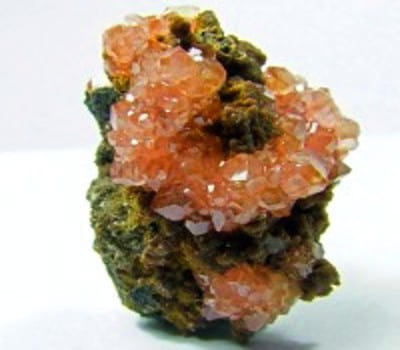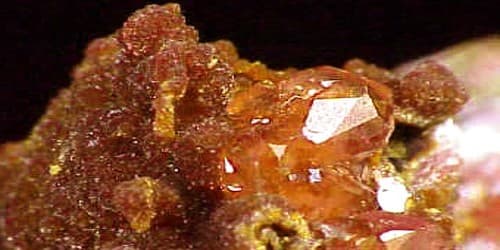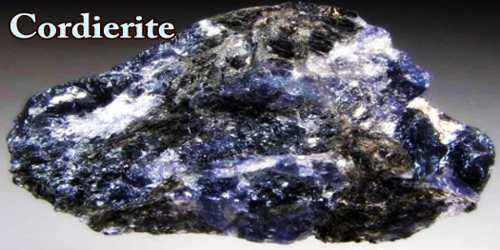Leucophoenicite is a mineral with formula Mn7(SiO4)3(OH)2. It is a mineral consisting of a manganese silicate. Generally brown to red or pink in color, the mineral gets its name from the Greek words meaning “pale purple-red”. Leucophoenicite was discovered in New Jersey, US and identified as a new mineral in 1899.
The name is derived from the Greek words leukos, meaning “pale”, and foinis, meaning “purple-red”, in reference to its common coloring.
General Information
- Category: Nesosilicates
- Formula: Mn7(SiO4)3(OH)2
- Crystal system: Monoclinic
- Crystal class: Prismatic (2/m) (same H-M symbol)
- Color: brown, brown, violet red, light red, dark pink.

Properties
Leucophoenicite is normally brown, light purple-red, raspberry-red or pink in color; in a thin section, it is rose-red to colorless. Leucophoenicite is a rare contact metamorphic or late-stage hydrothermal mineral in veins and skarn in the zinc-manganese orebody at Franklin, New Jersey, the USA which is the mineral’s type locality. Other localities include in Sweden, Italy, Namibia, and South Africa.
- Cleavage: Imperfect on {001}
- Tenacity: Brittle
- Mohs scale hardness: 5.5 to 6
- Luster: Vitreous
- Diaphaneity: Transparent to translucent
- Optical properties: Biaxial (-)
- Crystal Habit: Striated, Massive
- Class: Monoclinic – Prismatic
- Fracture: Brittle.
History
Leucophoenicite was first found by J. J. McGovern at the Franklin Mine in New Jersey. The specimen, which consisted mostly of the mineral, was given to C. H. Warren in 1897. First thought to be clinohedrite deeply colored by manganese, it was identified as a new mineral in 1899 by Warren and Samuel Lewis Penfield.
Occurrence: A late-stage hydrothermal or contact zone mineral in veins and skarns in a metamorphosed stratiform Zn-Mn orebody (Franklin, New Jersey, USA).
Leucophoenicite typically occurs as isolated grains or it has a granular massive habit. Crystals of the mineral, which occur rarely, are slender, prismatic, elongated, and striated. It is a member of the humite group. It has been found in association with barite, barysilite, calcite, copper, franklinite, garnet, glaucochroite, hausmannite, jerrygibbsite, manganosite, pyrochroite, rhodochrosite, sonolite, spessartine, sussexite, tephroite, vesuvianite, willemite, and zincite.
Information Source:
















